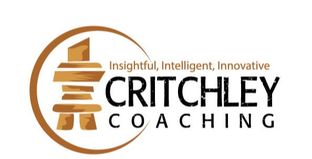
I heard the most wonderful back-to-school story this week. One of my daughter’s students, on the very first day back, upon being welcomed by Kaitlyn, said, ‘Mrs. Hanson, I am so glad to be back. I was afraid my parents wouldn’t let me come.’ The student was so earnest, and clearly delighted to be back that Kaitlyn followed up asking if the parents had been considering keeping their child at home.
The student confirmed that yes, she had been lying in bed one night in August, as the decision date loomed, and she could hear her parents discussing the matter. To her young ears, it sounded like the decision may not land in her favour, which was to return to school. She could not sleep. When she felt her parents were safely tucked in for the night, she got up, turned on her computer and created a PowerPoint presentation, outlining the merits of her returning to the school she loves.
This little story might be the perfect snapshot of the conundrum surrounding school openings this year. Each side has sound, thoughtful, correct, compelling reasons for either attending or not. We will never know which side is ‘right’. This makes it very difficult. To make matters worse, there is fear involved. There is fear on both sides; fear that if children return to school, the spread of Covid 19 will be exacerbated, and fear that if children do not return to some kind of normalcy, their mental and academic health will suffer, as will our economy.
What I absolutely love about this anecdote, is the advocacy demonstrated by this young student. She had so many options available to her. She decided to forego having a tantrum, forego being helpless, forego ignoring the issue, forego indifference, forego manipulation and instead chose advocacy for herself. Not only did she advocate for herself, she did it in a way that left all the players in the situation, with full dignity intact.
It is something I could do better.
I’ve been thinking about how and when, during the span of my life, I have and have not advocated for myself. I’ve been thinking about what kind of PowerPoint presentations I might have made that might have helped me do such advocating.
PowerPoint is used most effectively when the creator of the slides sticks to a few basic rules. The most powerful PowerPoint presentations include slides containing as few words as possible. The same can be said for advocating for ourselves. Once we get crystal clear about what we really want or need, there is no need to start our advocacy with a review of every past missed opportunity or every slight we have endured.
It’s advised we avoid using all capital letters on any slide. I’m thinking this might be a good rule for self-advocacy too. When we are typing in all caps, it is the equivalent of yelling at our audience. This very rarely elicits the response we are hoping for. Calm, clear, rational thoughts rarely force the listener into a defensive mode.
When preparing our convincing presentations, our slides shouldn’t overuse special effects such as animations, sounds and flashy transitions such as fly-ins either. Same in life. Drama, theatrics, crying, yelling and finger pointing very rarely get us what we want. On the rare occasion they do, we end up feeling so badly about our own behaviour, the victory seems hollow.
The young student in Kaitlyn’s class has given me a new tool to use. I happen to have a few upcoming places where I will need to advocate for myself. I’m going to start imagining exactly what I might put on my PowerPoint presentations for these occasions. I’m also going to imagine how I want to present myself; hopefully showcasing me at my best, most integrous, thoughtful and intelligent. I also think this idea will give me a very good litmus test for what exactly I will find important enough to advocate for. If I can’t be bothered making a slide presentation, perhaps I might reconsider how much value I actually place on the issue at hand.
I don’t plan on showing up anywhere in the next weeks with my lap top and power cord in hand. I do however, think I’ll be imagining myself giving some real award-winning presentations. I can only hope to achieve the same kind of results as Kaitlyn’s young student.
My inquiry for you this week is, ‘What will serve me best in my presentation?’
Elizabeth is a certified professional Leadership Coach, and the owner of Critchley Coaching. She is the founder and president of the Canadian charity, RDL Building Hope Society. She works with corporations, non-profits and the public sector, providing leadership coaching. She creates and facilitates custom workshops for all sizes of groups. She has particular expertise in facilitating Strategic Plans for organizations. Contact Elizabeth to learn the fine points of PowerPoint.


 RSS Feed
RSS Feed